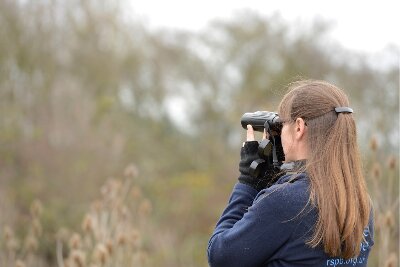Surveyor (Not on a Reserve) (Cairngorms Wader Survey – volunteer surveyor)

We are looking for volunteers to survey breeding waders on farmland sites across Badenoch and Strathspey, Glenlivet, Tomintoul and parts of Perthshire. Are you interested?
The 2025 Cairngorms Wader Survey aims to monitoring the breeding populations of Curlew, Lapwing, Snipe, Oystercatcher and Redshank on farmland sites throughout the Cairngorms. The 2025 survey marks the 25th anniversary of the Cairngorms Wader Survey, which was formerly called the Strathspey Wader Survey. The survey has taken place on a five-yearly basis and has provided vital information on the health of one of the most important breeding populations of lowland waders. Information gained from the survey helps us to work closely with farmers to help ensure that wader-friendly management is incorporated into the farming calendar. The 2025 survey will involve up to 70 volunteers who will be surveying over 100 different farms across Badenoch and Strathspey, Glenlivet, Tomintoul and Perthshire areas of the Cairngorms National Park. The survey is being organised with support and assistance of the RSPB Species Volunteer Network project, a project that is now running in Scotland thanks to players of People’s Postcode Lottery.
What’s involved and when?
The survey period runs from March to June 2025. The survey requires volunteers to carry out one habitat recording survey visit during March or April and three wader recording survey visits on the same farm, with at least two weeks between visits, in the following schedule:
• Visit 1: 18th April – 8th May
• Visit 2: 9th May – 29th May
• Visit 3: 30th May – 19th June
Habitat surveys can be carried out at any time of day, but the bird surveys are to be carried out between one and four hours after dawn or three hours before dusk during good weather. Note that dawn and dusk are not the same as sunrise and sunset. Each survey visit usually takes between 2 – 3 hours, depending on the size and terrain of the site and the ability of the surveyor. Volunteers can be matched to sites to suit their level of fitness and survey experience.
We are looking for volunteers with the following skills and experience:
• Reasonable level of fitness, with the ability to walk 3-6 km over farmland, on uneven and sometimes rough terrain.
• You will need a basic knowledge of local birds and you will be identifying the following birds: Curlew, Lapwing, Snipe, Oystercatcher and Redshank.
• Self-motivated, conscientious and reliable.
• Confident reading a map and following written instructions.
• Ability to complete the survey as an individual or potentially with another volunteer (with prior agreement of the survey organisers).
• Access to your own transport
• Able to follow health and safety guidance and undertake lone work in a safe and conscientious manner.
Volunteers will require binoculars*, sturdy and waterproof footwear**, warm and waterproof outdoor clothing. Many of the survey sites will be in exposed remote locations, so you will need to be prepared for changeable weather! You will need your own transport as survey locations are in remote locations that will not be accessible via public transport.
This role is best suited to volunteers living in or close to the Cairngorms National Park and surrounding area. We will make every effort to match volunteers to survey sites close to their homes, although we would appreciate assistance from volunteers able to survey sites in more remote locations. Surveys will take place on farmland, so volunteers will need to be comfortable being in a farmland environment where machinery and livestock may be present at times.
*- Binoculars can be loaned out for free to volunteers who do not have their own pair (please let us know if you require binoculars). ** - Wellies may be available to loan to volunteers who do not have them.
What’s in it for you
This role offers you the opportunity to have a direct impact on the conservation of lowland waders in the Scottish Highlands. You will be able to build up your bird survey experience and pick up new skills around surveying. An opportunity to be out in nature and benefit your own health and wellbeing, this role will suit someone who enjoys being outdoors. You will have to observe wildlife closely, which is wonderful if you take enjoyment from the natural world. Monitoring can often take you to the same places time and again, so you will see the season changes. This role offers a fantastic opportunity to develop your volunteering with the RSPB and contribute to our Saving Nature strategy by taking on this role.
What happens next?
After you have applied to the role and have been registered as a volunteer with the RSPB, you will be contacted regarding survey site allocations between late-February and mid-March. You will receive survey packs, complete with survey instructions, survey maps and safety information in the post during March. We plan to run on-site training days for volunteers during March.